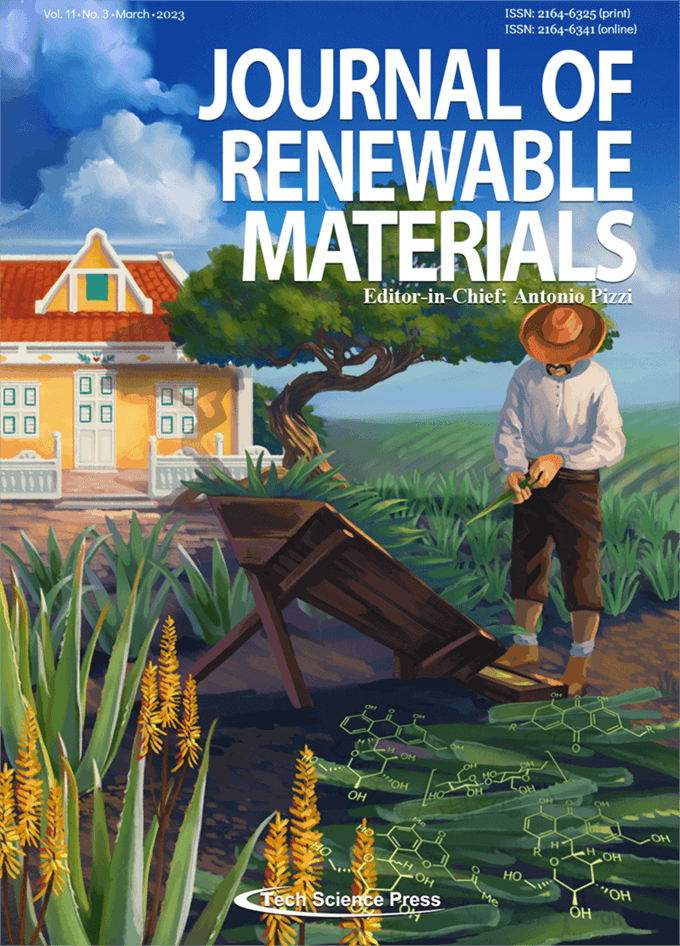Study on Strength Reduction Law and Meso-Crack Evolution of Lower Layered Cemented Tailings Backfill
Huazhe Jiao1,2,3, Wenxiang Zhang1,2,3,*, Yunfei Wang1,2,3,*, Xinming Chen1,2,3, Liuhua Yang1,2,3, Yangyang Rong1,2,3
Journal of Renewable Materials, Vol.11, No.3, pp. 1513-1529, 2023, DOI:10.32604/jrm.2023.026008
- 31 October 2022
Abstract The green disposal of tailings solid waste is a problem to be solved in mine production. Cemented tailings filling
stoping method can realize the dual goals of solid waste resource utilization and mined-out area reduction. However, the volume of the mined-out area of the open-pit method is larger than the filling capacity, resulting in the
complex stratification of the underground backfill, and the strength of the backfill cannot meet the requirements.
In this paper, according to the delamination situation, the specimens of horizontal and inclination angle layered
cemented tailings backfill (LCTB) is made for a… More >
